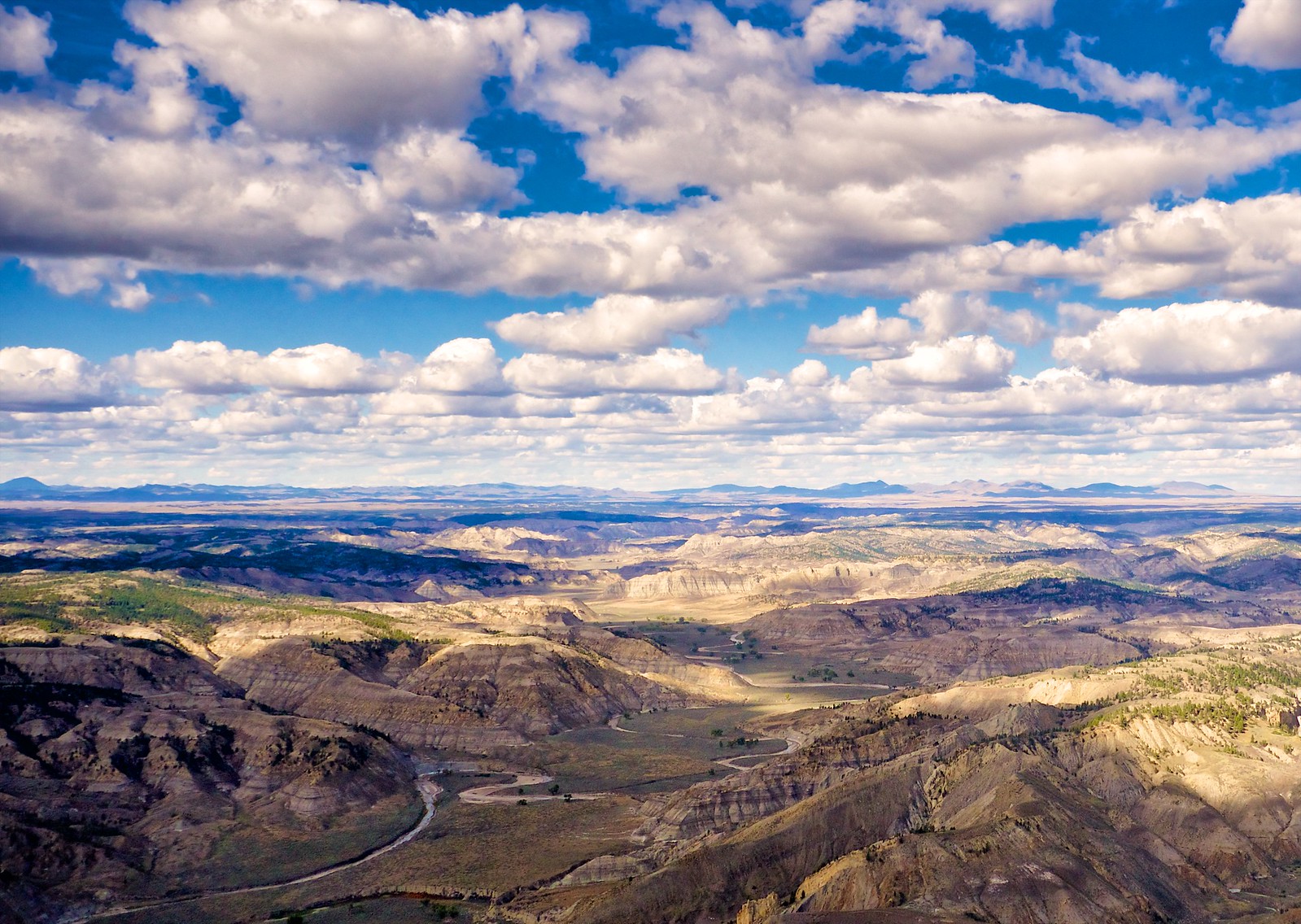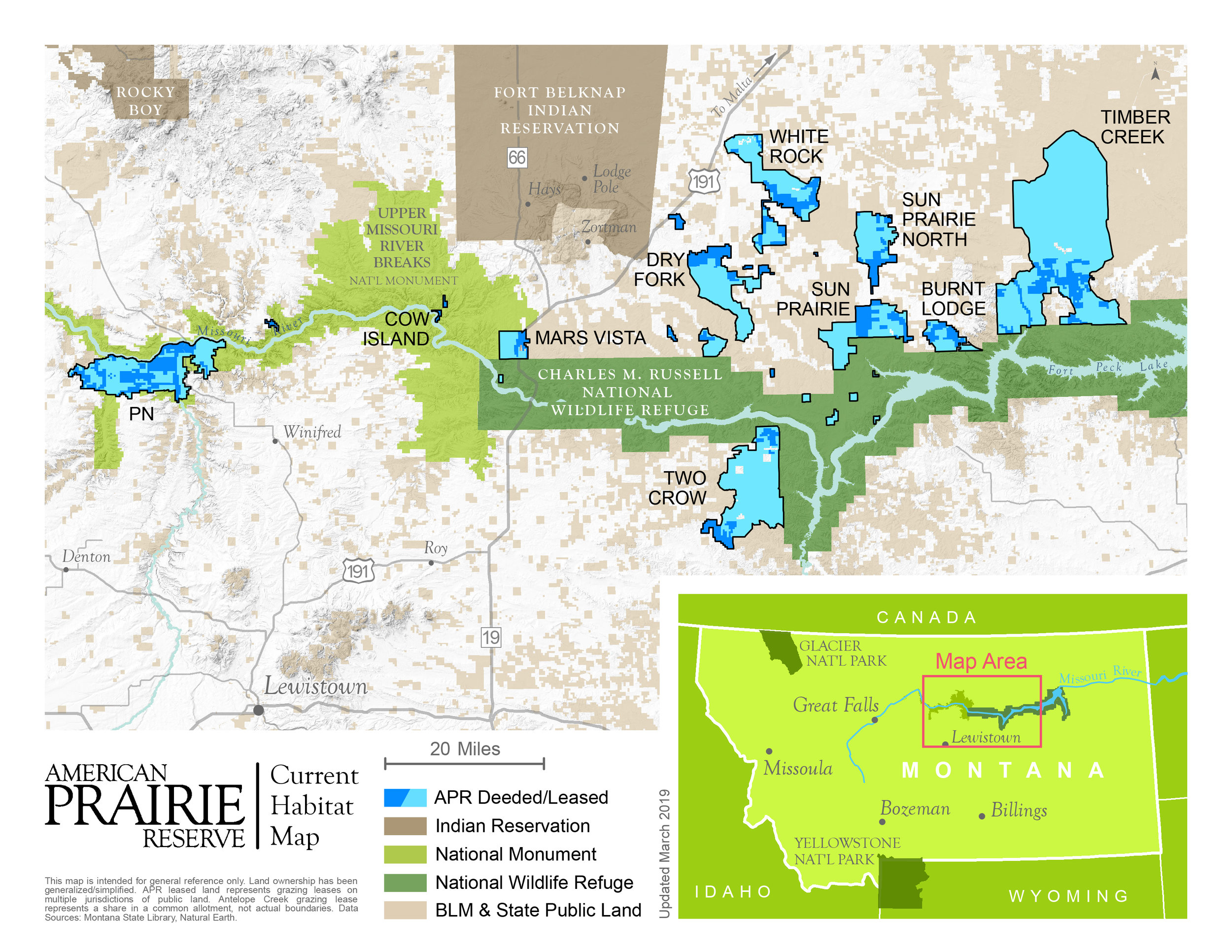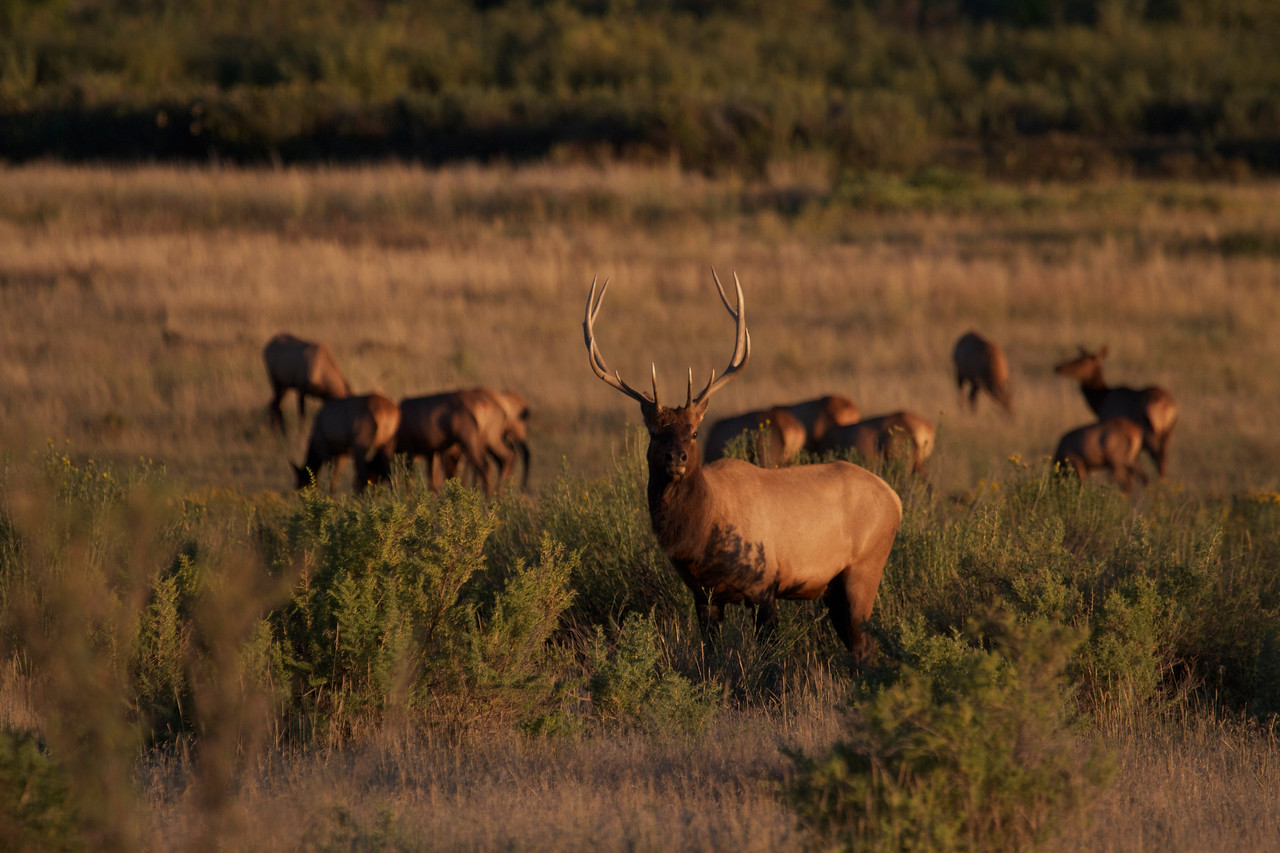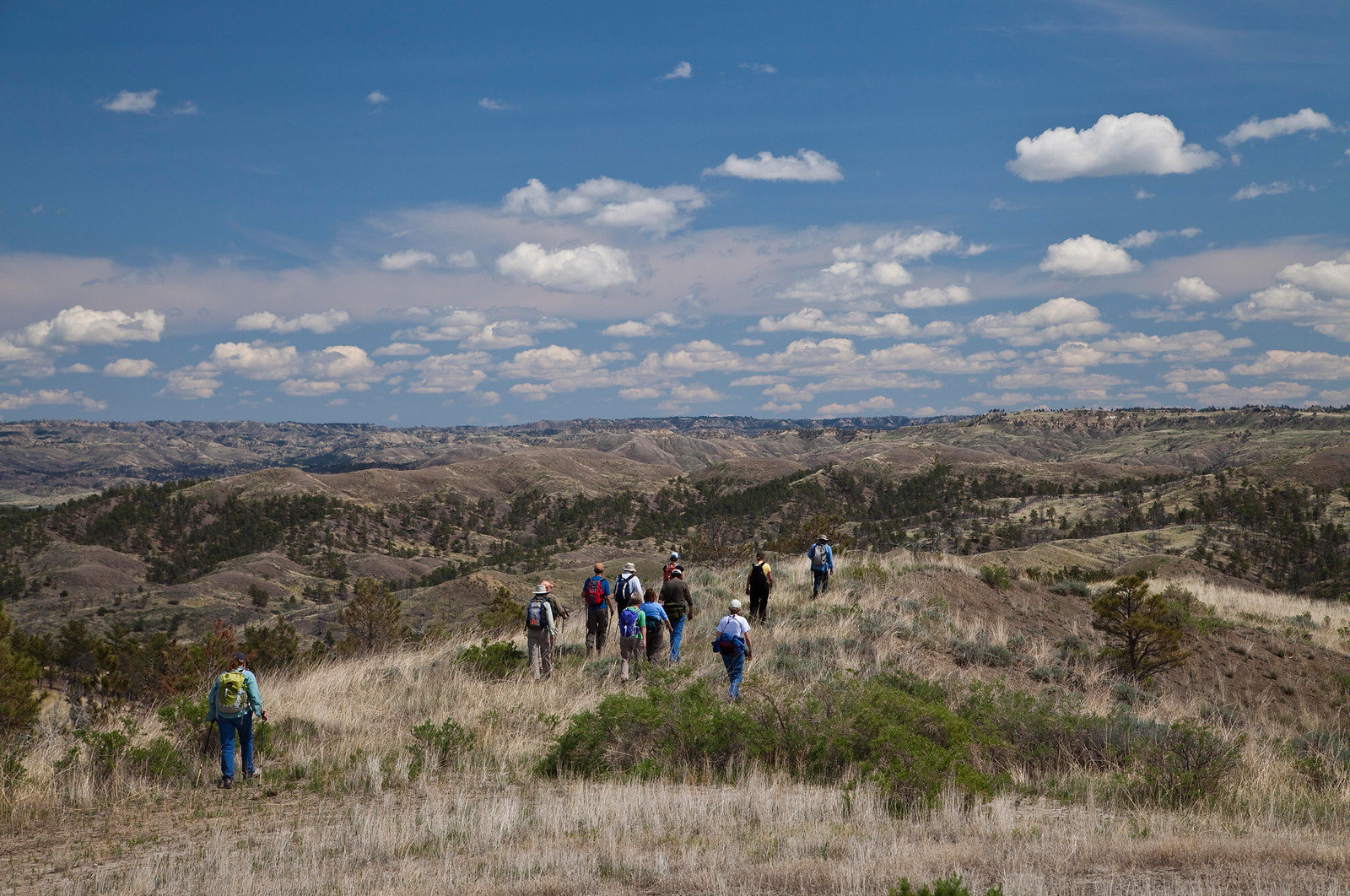Two Crow Ranch, located 30 miles north of Winnett, Montana, and comprised of 5,002 acres of private land and 41,273 acres of leased public land was willingly sold to a group of conservationists from nearby Bozeman.
The conservationists celebrate the closing of the 26th such land purchase since 2004. The previous 25 purchases have all been land acquisitions from willing sellers along each side of the Charles M. Russell National Wildlife Refuge running along the Missouri River in Montana.
Now in 2019, the American Prairie Reserve (APR) has completed 28 transactions, taking their total to 94,000 acres of privately owned land and 310,000 of leased public lands. Their objective is to create the largest single parcel of managed land for the purposes of conservation and recreation in all of North America.

American Prairie Reserve
Like an ocean with the water taken out of it, the American Prairie or Great Plains region stretches across 16 states, is the ancestral home of dozens of Native American tribes, and contains the natural habitat for almost all species of North American megafauna.
In 1999, The Nature Conservancy (TNC) published Ecoregional Planning in the Northern Great Plains Steppe, which, for the first time, pinpointed specific, critical areas of the Northern Great Plains that were the most viable for conserving the existing diversity of plants and animals.
The region just north of the Charles M. Russell National Wildlife Refuge in northeastern Montana was identified as a top priority for grassland conservation, owing to the relatively pristine condition of the land and the diversity of wildlife species in the area.
Shortly after TNC published its findings, World Wildlife Fund decided to initiate a conservation effort in the Montana Glaciated Plains, one of the key areas identified by TNC. They determined that an independent entity, capable of focusing all of its time and resources on the preservation of Montana’s Northern Great Plains, would be the best vehicle through which to initiate a large-scale conservation effort.
Since the Great Plains is one of the largest ecosystems in North America, the natural inclination of people like Bryce Christensen, Reserve Manager of American Prairie Reserve, was to go big – really, really big.
“Our ultimate dream is to have a three, three-and-a-half million acre fully functioning ecosystem where all the animals that were there 100 years ago, 150 years ago have an opportunity to interact again,” says Bryce in a National Geographic special on the APR.

Like It Was
Some National Parks Like the Great Smoky Mountains were created in ways that are similar to what APR is doing – namely the purchasing of land by private individuals or organizations for the purposes of turning them over to the federal government on the grounds they be preserved. The plan isn’t for APR to turn it all over in the end, namely because of the different kinds of public lands included in the desired 3.5 million acre reservation, and of the advantages that come with a private-public conservation strategy.
Their stated objective is the purchasing of 500,000 private acres, to be used to stitch together a mosaic of different chunks of public land spanning from the Charles Russell National Wildlife Refuge in the east to the Missouri Breaks National Monument in the west.
Management of the eventual wildlife complex will be conducted by the various entities with land ownership and wildlife management authority including the U.S. Fish and Wildlife Service, U.S. Bureau of Land Management, Montana Department of State Lands, Montana Fish, Wildlife & Parks and American Prairie Reserve.
Biologists working with the APR have determined that a mixed grass prairie would need to be 5,000 square miles (about 3.2 million acres) to have an ecosystem with the capability for things to be as they were before the West was won. Yellowstone National Park is about 3,400 square miles for comparison.
The size is also necessary if the ecosystem is to possess the resilience to withstand natural disasters like wildfire, winter storms, and disease. APR currently stewards more than 405,000 acres of deeded private land and leased public land.
Temperate grasslands are one of the most vulnerable ecosystems on earth, and according to APR, there are only 6 regions left on earth capable of playing host to landscape-wide conservation projects, with Montana being one of them.

Bison and Friends
“Clearly we’ll have the capacity to hold the largest bison herd in the country,” says Bryce.
During the 19th century, millions of people paid for a train ticket to visit the breathtaking scenery of the American Prairie, where bison herds would file onward over the plains taking 3 hours to fully pass. And while today most people imagine the bison as the quintessential image of life on the Great Plains, for thousands of years the grasslands played host to the largest diversity of wildlife in the country.
Bison, pronghorn, mule deer, bighorn sheep, elk, moose, and several other species of ungulate pranced across the plains while being stalked by all the classic predators of North America; black and brown bear, cougars, bobcats, wolves, and coyotes.
All manner of small mammals like the now-endangered swift fox scurried about under the thunderous hooves of plains herds, and a great wealth of winged wildlife circled above looking for carrion or a prairie dog caught off his guard. In truth, the American Great Plains looks a fair bit like the African plains of the Serengeti, or the weald of Kruger National Park in South Africa. You can download the entire species list here.
“We’re beginning to put things back on that landscape, and we’re really excited to think about the day when it’s all back in balance the way it was for thousands and thousands of years,” says APR President Steve Gerrity.
The mission of American Prairie Reserve is to create the largest nature reserve in the continental United States, a spectacular refuge for people and wildlife preserved forever as part of America’s heritage. Learn more on our website: www.americanprairie.org
PICTURED ABOVE: PC: Dennis Lingohr
If you think the stories you’ve just read were worth a few dollars, consider donating here to our modest $500-a-year administration costs.



